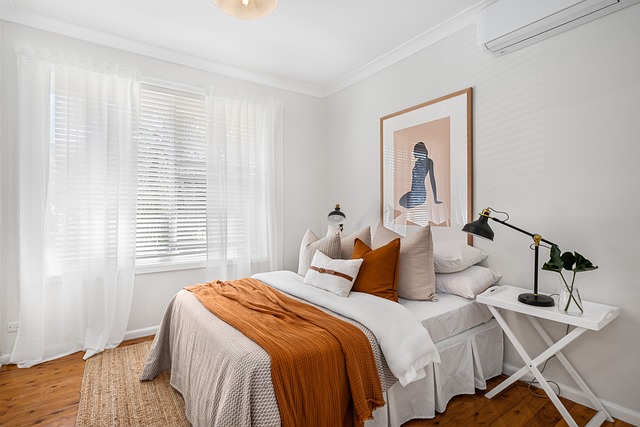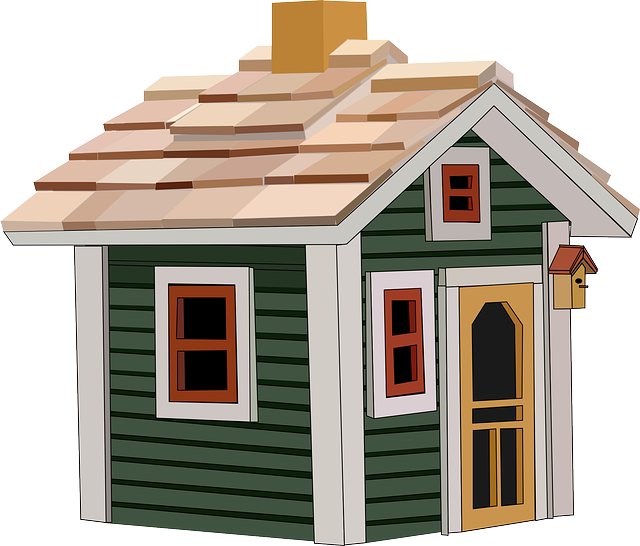Flashlights for home use are essential tools for ensuring safety and visibility during power outages or other emergencies. A reliable flashlight should be robustly built with durable materials like aircraft-grade aluminum, have a secure twist or tailcap mechanism to prevent accidental activation, and feature an ergonomic design with a non-slip grip. Modern models come with various light modes, including high, medium, and low settings, and may include advanced features such as strobe functions for distress signaling, voice control, or smartphone app integration. They should be impact resistant, waterproof, and offer USB charging capabilities to maintain readiness across different conditions. Real-life scenarios demonstrate their indispensable nature, from guiding families through dark homes during storms to identifying gas leaks or aiding in home invasions, proving that flashlights for home use are not just lighting devices but critical components of household safety preparedness.
When darkness falls or power fails, flashlights for home use become invaluable tools. This article illuminates their essential role and guides you through selecting the ideal flashlight. We delve into the significance of battery efficiency and brightness levels, identify the best types for domestic safety, and discuss material durability. Additionally, we explore innovative features that enhance functionality, from redundancy to smart technology. Real-life case studies underscore their indispensable nature in maintaining security and order during unexpected outages. Understanding these aspects ensures you’re prepared when navigating the unlit spaces within your home.
- Understanding the Essential Role of Flashlights for Home Use
- Key Features to Look for in a Home-Use Flashlight
- The Impact of Battery Type and Brightness on Effectiveness
- Types of Flashlights Suitable for Domestic Settings
- Navigating Safety: Best Practices for Using Flashlights at Home
- Flashlight Durability: Materials and Design Considerations
- Innovative Features: From Redundancy to Smart Functionality
- Case Studies: Real-Life Scenarios Where Home Flashlights Proved Indispensable
Understanding the Essential Role of Flashlights for Home Use

When darkness falls or during unexpected power outages, flashlights for home use become indispensable tools for safety and navigation. They provide immediate illumination, allowing homeowners to move around safely without stumbling over furniture or tripping on uneven flooring. The right flashlight can ensure visibility during emergencies, such as when checking on a potential intruder, navigating through a darkened house after an outage, or even finding your way in a dimly lit room at night. Selecting a flashlight for home use involves considering lumen output, battery type, and durability to ensure it performs reliably under various conditions. High-lumen flashlights can illuminate larger areas, while compact models are perfect for quick tasks or storage in easily accessible places. Additionally, LED technology offers long-lasting brightness with minimal energy consumption, making it a preferred choice for homeowners who want a dependable light source. Features like adjustable beams, water resistance, and impact resistance further enhance their utility, ensuring that they remain operational when you need them most. Investing in flashlights for home use is a proactive step towards maintaining safety and preparedness within your living space.
Key Features to Look for in a Home-Use Flashlight

When selecting a flashlight for home use, it’s crucial to consider several key features that can enhance both safety and convenience during unexpected power outages or when navigating dark spaces within your living quarters. Firstly, lumens output is a significant factor; higher lumens typically mean a brighter beam, which is beneficial for illuminating larger areas or for tasks requiring precise visibility. A durable construction is also essential, as it ensures the flashlight can withstand accidental drops or bumps around the home without failing when you need it most.
Moreover, consider the type of batteries the flashlight uses; rechargeable options are both cost-effective and environmentally friendly, offering a sustainable solution for repeated use. The beam type is another critical aspect—a focused beam is ideal for distant tasks or to signal for help, while a wider flood beam is better suited for close-range activities like reading or navigating staircases safely. Additionally, features such as adjustable brightness settings can extend battery life and provide just the right amount of light needed, minimizing glare and eye strain. Lastly, ergonomic design and ease of operation, including tactile switches that are accessible even with gloves on, ensure that a high-quality home-use flashlight remains a reliable tool in your household arsenal. Flashlights for home use, when chosen with these features in mind, can be a significant asset for maintaining comfort and safety in your home environment during any situation that calls for illumination beyond the capabilities of standard lighting solutions.
The Impact of Battery Type and Brightness on Effectiveness

When selecting a flashlight for home use, the impact of both battery type and brightness cannot be overstated when it comes to effectiveness in navigating dark spaces. High-quality batteries are pivotal; they ensure that your flashlight maintains optimal performance throughout its intended lifespan. Lithium batteries, for instance, typically offer a longer runtime and more stable output compared to their alkaline counterparts. This reliability is particularly crucial during power outages or when performing tasks that require sustained illumination, such as searching for an item in a cluttered attic or inspecting wiring in a dark basement.
Brightness, measured in lumens, directly correlates with the flashlight’s ability to illuminate your surroundings effectively. For home use, a brightness level that suits the tasks at hand is essential. A flashlight with a high lumen output may be ideal for emergency situations or when you need to light up a large area quickly. However, for everyday tasks, a moderate brightness might be more practical, offering both visibility and convenience without causing discomfort due to overly harsh lighting. Flashlights designed for home use often come with adjustable settings that allow users to select the appropriate brightness level, maximizing both safety and usability within the confines of a domestic environment.
Types of Flashlights Suitable for Domestic Settings

When it comes to ensuring safety and preparedness within domestic settings, flashlights for home use are indispensable tools. A well-stocked household should include a variety of flashlights tailored to different needs. For everyday tasks like finding a lost item under the couch or checking a suspicious noise in the night, compact and user-friendly options like AA or AAA battery-powered models are ideal. These flashlights are lightweight, durable, and easy to operate, making them perfect for quick, close-range illumination. Their affordability also allows for multiple units to be kept throughout the home, such as in the kitchen drawer, bedroom nightstand, or tool shed.
For more demanding situations or emergencies that may require a sustained power source, rechargeable flashlights with high lumen output come into play. These flashlights for home use are equipped with lithium-ion batteries and can provide intense beams over longer periods. They often feature adjustable brightness settings, which is beneficial for conserving energy when less light is needed and maximizing it during power outages or when navigating through a dark house after an unexpected power failure. Additionally, some models include special functions like SOS signals or red filters that can help preserve night vision, making them versatile and suitable for a variety of domestic applications.
Navigating Safety: Best Practices for Using Flashlights at Home

When utilizing flashlights for home use during navigating safety, it’s imperative to have a reliable source of illumination. A high-quality flashlight with a durable design can provide steady light when power outages occur or during maintenance work in dimly lit areas. To maximize the efficiency and safety of your flashlight at home, ensure you select one with a long battery life and consider purchasing extra batteries to avoid being caught in darkness unexpectedly.
Safety protocols should be observed while handling flashlights. Always point the beam away from eyes to prevent injury to yourself or others. Use flashlights for task lighting rather than as handheld spotlights. When climbing ladders or moving through tight spaces, secure the flashlight with one hand and keep a firm grip. In the event of an emergency, keep your flashlight maintenance-free by cleaning it regularly and storing it in a dry place to prevent condensation from affecting its performance. Additionally, familiarize yourself with the various modes and settings your flashlight offers, such as strobe or SOS signals, which could be critical in signaling for help during an emergency. Flashlights for home use should be easily accessible in times of need; consider mounting them in strategic locations like hallways, basements, or next to important documents or electronics. By adhering to these best practices, you can ensure that your flashlight serves as a trustworthy companion when navigating through dark spaces within the confines of your home safely and effectively.
Flashlight Durability: Materials and Design Considerations

When selecting flashlights for home use, durability is a paramount consideration. High-quality flashlights are engineered with robust materials that withstand the rigors of frequent use and can endure accidentsal drops or exposure to harsh environmental conditions. A common material used in the construction of durable flashlights is aircraft-grade aluminum, which offers a excellent balance between weight and strength. This material resists corrosion and conducts heat efficiently, ensuring that the LED light source remains operational under pressure.
Another critical aspect of flashlight durability lies in its design. A flashlight designed for home use should feature a sturdy headbezel made from tempered glass or a durable polycarbonate lens to protect the bulb and reflector. The bezel can also aid in focusing the light beam. Additionally, a well-thought-out design includes a secure twist or tailcap that prevents accidental activation and safeguards the battery compartment from moisture and debris. Ergonomic designs with non-slip grips not only make operation easier but also ensure the flashlight remains in hand during use, even when it’s wet or oily. In terms of functionality, impact resistance and waterproofing are essential features to consider for home-use flashlights, as they guarantee performance when you need them most. Flashlights For Home Use should be reliable companions in a power outage or when navigating through dark spaces within your residence.
Innovative Features: From Redundancy to Smart Functionality

In the realm of home safety and preparedness, flashlights for home use have evolved beyond traditional designs, incorporating innovative features that offer both redundancy and smart functionality. These advancements are crucial for ensuring visibility during unexpected power outages or when navigating through dark spaces within your residence. Modern flashlights often come equipped with multiple light modes, including high, medium, and low settings, which conserve battery life while providing the right level of illumination for various tasks. Some models even include a strobe function, which can be used as a distress signal or to deter intruders. Additionally, these devices are now being integrated with smart technology, allowing users to control them via voice commands or through smartphone applications. This integration not only enhances user experience but also allows for remote activation, providing a hands-free solution when both of your hands are needed for other tasks.
The integration of smart functionality in flashlights for home use is particularly beneficial, as it combines the reliability of a traditional flashlight with the convenience and connectivity of modern technology. These intelligent flashlights can remember your preferred settings, learn your usage patterns, and even alert you when it’s time to replace the battery or when maintenance is required. With features like built-in USB charging ports and weatherproof designs, these flashlights are prepared for use in various conditions, ensuring that they are always ready when needed. This level of sophistication makes them indispensable tools for every home, enhancing both safety and convenience during those moments when darkness becomes an obstacle.
Case Studies: Real-Life Scenarios Where Home Flashlights Proved Indispensable

During unexpected power outages, flashlights for home use have proven to be indispensable tools for safety and navigation. Take the case of the Johnson family during the sudden blackout caused by a severe storm. As darkness fell, their home flashlight was the only source of light, guiding them through the darkened house and allowing them to safely navigate stairs and locate essentials like the circuit breaker and first aid kit. Similarly, the Martinez household utilized their flashlights during a kitchen fire emergency. The bright beam from their home flashlight helped them identify the origin of the fire, facilitated communication with emergency services, and provided illumination for evacuating the premises without injury.
In another instance, the Davis family’s use of high-quality home flashlights demonstrated their practicality beyond just power outages. When a gas leak was detected, the flashlight’s light helped them quickly identify the leaking connection in a darkened basement, enabling timely repair and preventing what could have been a catastrophic situation. Furthermore, during a late-night home invasion scare, the flashlights for home use provided the Davis family with the visibility needed to remain vigilant while they took shelter and awaited law enforcement arrival. These real-life scenarios underscore the importance of having reliable, easy-to-access flashlights specifically designed for home use, highlighting their role as a critical component of household safety preparedness.
When darkness falls unexpectedly or during an emergency, a reliable flashlight for home use becomes an indispensable tool. This article has illuminated the critical aspects of selecting a flashlight, from its key features and battery efficiency to its durability and innovative capabilities. Homeowners can now make informed decisions to ensure they have a suitable light source in moments of need. By considering the types of flashlights that fit domestic settings and adhering to best practices for safety and use, one can navigate through the dark with confidence. The case studies provided underscore the real-world value of having a quality flashlight on hand. In conclusion, investing in a high-quality flashlight for home use is not just prudent preparation; it’s a smart choice for everyday life and emergencies alike.
